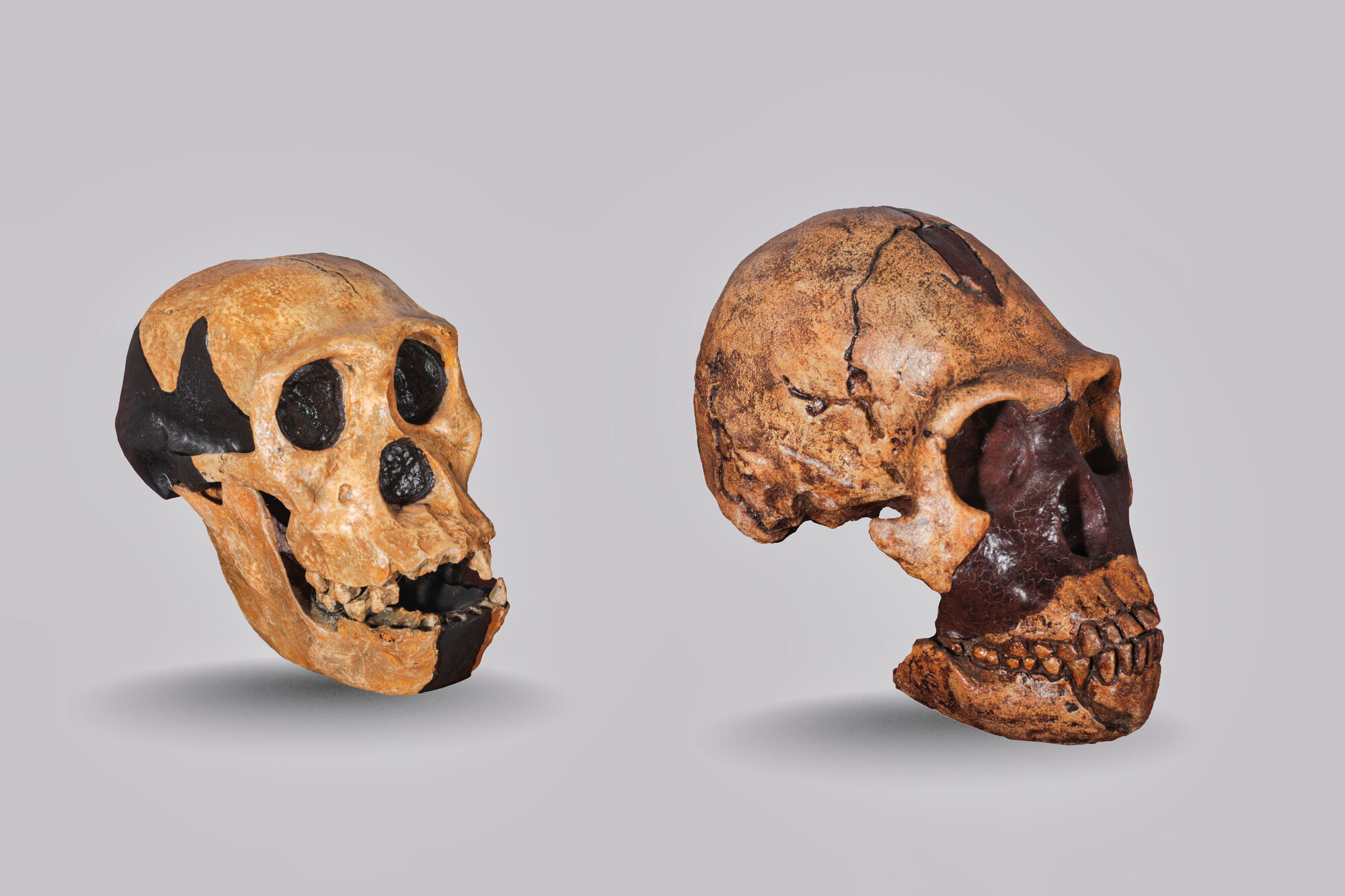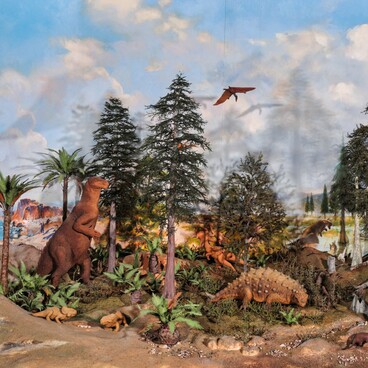The showcase presents the skulls of two fossil human relatives–Australopithecus sediba and Homo naledi. Both species were discovered and described by anthropologist Lee Berger. Their remains were found on the territory of the ‘Cradle of Humankind’ complex in South Africa.
Scientists found two incomplete skeletons of Australopithecus sediba in 2010 in Malapa Cave. The cave was part of a complex of karst caves that were discovered using the Google Earth service.
Australopithecus sediba lived 1,95 million years ago. Its position in the evolutionary tree is still unclear to researchers, however, most likely, this species was a descendant of Australopithecus africanus.
According to most features, Australopithecus sediba occupies an intermediate position between Australopithecus and humans. In many ways, he is more like modern people than Homo habilis. He had a small brain of 420 cm3, and the structure of his arms and legs was primitive, that is why he was attributed to the Australopithecines.
Progressive facial features assimilate Australopithecus sediba to the Homo genus; their weakly protruding cheekbones, the shape of the nasal bones, small molar teeth, as well as some structural features of the brain, hand, and pelvis.
Homo naledi was discovered in 2013 in the Rising Star cave. The expedition members found more than 1500 bone fragments from fifteen individuals. The great similarity of these ancient people made it possible to conclude that they belonged to the same population.
Judging by the two preserved skulls, the Homo naledi had a small brain of 465–560 cm3. According to the structure of the skull, this species of people is close to the group of early Homo. Moreover, the graceful structure of skull bones and the small size of the teeth make it similar to a later species–Homo erectus.
Homo naledi can be described as a creature with primitive arms, thick ribs, and a large belly. Anthropologists believe that it was a highly specialized species of people, that is, adapted to certain conditions of existence.
By thorium-uranium and paleomagnetic dating sediments, scientists have found out that Homo naledi lived only 200–300 thousand years ago, when much more evolutionarily advanced Heidelberg people already inhabited Africa and Europe.
Scientists found two incomplete skeletons of Australopithecus sediba in 2010 in Malapa Cave. The cave was part of a complex of karst caves that were discovered using the Google Earth service.
Australopithecus sediba lived 1,95 million years ago. Its position in the evolutionary tree is still unclear to researchers, however, most likely, this species was a descendant of Australopithecus africanus.
According to most features, Australopithecus sediba occupies an intermediate position between Australopithecus and humans. In many ways, he is more like modern people than Homo habilis. He had a small brain of 420 cm3, and the structure of his arms and legs was primitive, that is why he was attributed to the Australopithecines.
Progressive facial features assimilate Australopithecus sediba to the Homo genus; their weakly protruding cheekbones, the shape of the nasal bones, small molar teeth, as well as some structural features of the brain, hand, and pelvis.
Homo naledi was discovered in 2013 in the Rising Star cave. The expedition members found more than 1500 bone fragments from fifteen individuals. The great similarity of these ancient people made it possible to conclude that they belonged to the same population.
Judging by the two preserved skulls, the Homo naledi had a small brain of 465–560 cm3. According to the structure of the skull, this species of people is close to the group of early Homo. Moreover, the graceful structure of skull bones and the small size of the teeth make it similar to a later species–Homo erectus.
Homo naledi can be described as a creature with primitive arms, thick ribs, and a large belly. Anthropologists believe that it was a highly specialized species of people, that is, adapted to certain conditions of existence.
By thorium-uranium and paleomagnetic dating sediments, scientists have found out that Homo naledi lived only 200–300 thousand years ago, when much more evolutionarily advanced Heidelberg people already inhabited Africa and Europe.



